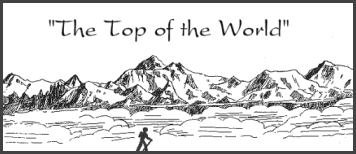List of Clothing, Equipment, and Personal Effects
- Light weight walking boots. If new boots are purchased, "break them in" to avoid blisters. Also, bring some spare laces.
- A pair of track or tennis shoes. To wear in the camp at night or when your boots are wet.
- Warm jacket. Fiberfill or down should be adequate. This is especially necessary during winter from November to February.
- A rain proof jacket with hood or a poncho. Get one that is guaranteed waterproof.
- Woolen shirts and thick sweaters. During the winter months, December through February, these items are essential. Thick sweaters can be purchased in Kathmandu.
- A pair of lightweight / heavyweight trousers. Heavyweight trousers are useful higher up in the mountains in the morning and at night.
- Windproof / waterproof trousers. These are necessary on all treks going above 10,000 feet.
- Thermal underwear. These are excellent to sleep in at night. In the winter months thermal underwear are quite invaluable.
- A track suit. Useful for wearing in camp and in the tent.
- 1-2 pair of loose long shorts / skirts.
- 2-4 cotton T-shirts.
- 1 lightweight long sleeved - shirt is particularly suitable for avoiding sun burn.
- A woolen hat to wear in the morning and at night. During winter it is an essential item. Also, bring a sun hat and ensure it has a wide brim to cover the face and neck.
- A pair of gloves. Leather with lining or woolen are best.
- 1 pair of sandals to wear in the cities and in camp.
- 2 pairs of thin and 2 pairs of thick woolen socks.
- Underwear: normal quantity. Swim suit and cloth hankies.
- Duffel bag or kit to carry gear while trekking.
- Day pack. This is a small rucksack to carry personal requirements for the day e.g. toilet items, cameras, film, towel, soap, etc.
- Water bottle.
- Snow glasses and sunglasses.
- 2-4 large plastic bags to separate clean clothes from dirty ones. 6-10 smaller plastic bags to dispose garbage.
- Wallet and /or money belt with compartments for coins.
- Toiletries with large and small towels. Toilet paper can be purchased in Kathmandu and some villages in the mountains.
- Small head lamp and/or flashlight with spare batteries and bulbs. Candles and a lighter.
- Snow gaiters essential during winter.
- An umbrella (optional) which is quite useful to ward off dogs, suitable as walking stick, to use as a sunshade and useful when it rains.
- Reading materials, camera and film, game items (optional), notebook, rubber bands, pen and pencil, envelopes, a diary, a calendar, a pocket knife, binoculars (optional), a small pillow or headrest (optional), Thermarest (optional), an inflatable sleeping mat, trekking map, adequate quantities of passport photographs.
- Personal medical supplies.
|



